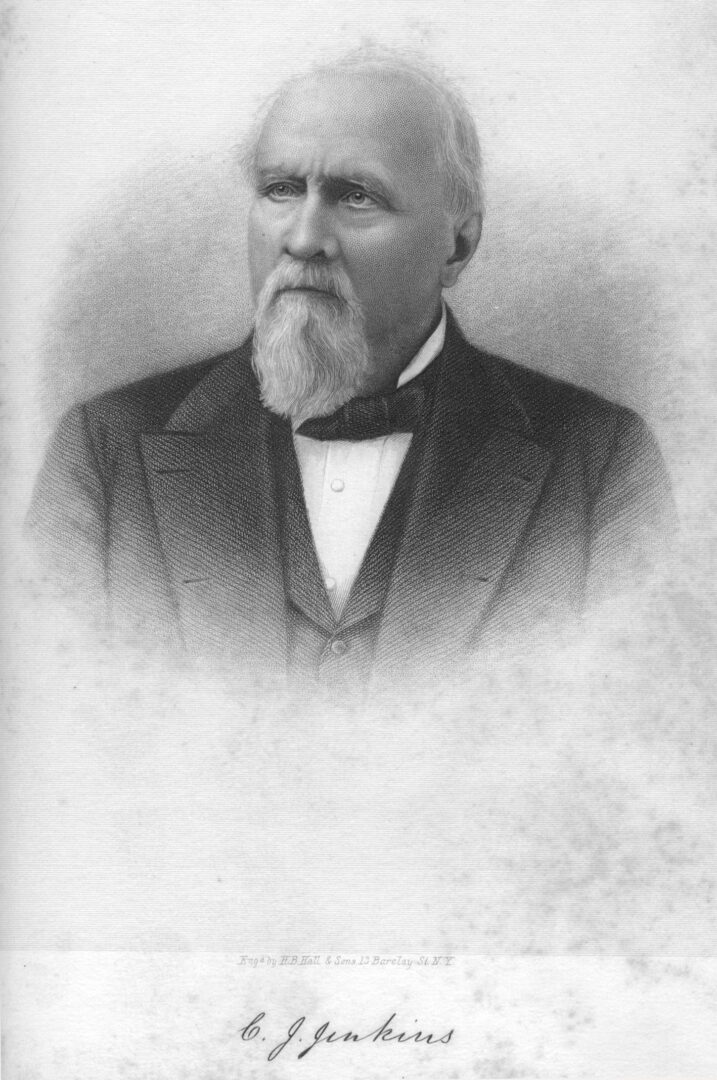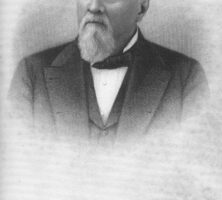The Georgia Constitutional Convention of 1877 created the state’s seventh constitution. Ratified at the end of Reconstruction (1867-76) with a firm Democratic majority in power, the Constitution of 1877 was a reaction to the perceived abuses of the Republican-dominated government that controlled the state after the Civil War (1861-65). This document included many of the provisions of the Constitution of 1868, but it succeeded in changing the power of the legislature and the state’s power to tax. It also implemented provisions supporting segregation.
1877 Convention
Many Georgians viewed the Constitution of 1868 as a product of Northern Republicans who moved south after the war. With the Democratic Party fully back in control of the state government, the legislature passed a bill in 1877 calling for a referendum to hold a new constitutional convention. The measure passed, and 193 delegates met on July 11, 1877, in Atlanta to draft the new constitution. Led by former governor Charles Jones Jenkins and supported by Robert Toombs, the constitutional convention adjourned on August 25 with a 115-page document, which voters ratified in December.
Using the Constitution of 1868 as a template, the convention formed committees to discuss each of that document’s thirteen articles. A fourteenth group, the Committee on Revision, was also created, with two delegates from each of the other thirteen committees serving on it.
Major Changes
Perhaps the greatest change from the 1868 Constitution was in the power of the state to tax its citizens. Concerned about the economic depressions of the 1870s and the abuses of the Reconstruction government on the state treasury, a majority of delegates formed an economic faction that supported lower taxes and restrictions to curb state expenditures (by cutting, among other things, the salaries of judges and other state officials). Article 7 restricted the use of tax money to support the state government, pay the public debt, support education, defend against insurrection and invasion, and provide artificial limbs for ex-Confederate soldiers injured during the Civil War.
Restricted too was the amount of debt the state, cities, and counties could accumulate. This fear of debt limited the state’s industrial potential since the constitution denied state encouragement to private enterprises through tax subsidies and other supportive measures. Favoring the status quo instead of vigorously promoting industrialization caused Georgia to lag behind other states during the ensuing industrial revolution.
The new constitution also decreased the power of the governor while increasing the power of the legislature. The governor’s term was decreased from four years to two years, and a two-term limit, by which one could run for a third and fourth term only after four years had elapsed, was instituted. The term of office for senators was changed from four years to two years to match that for legislators in the House of Representatives. The governor also lost the power to appoint (with the consent of the Senate) judges, the attorney general, and solicitors general. The General Assembly gained appointive power over all these offices with the exception of attorney general, which became a popularly elected office.
The judicial system also changed with the elimination of district courts and the enactment of six-year terms for the three appointed members of the Georgia Supreme Court. Superior, ordinary, and probate courts continued in each of Georgia’s counties, as did the elections of justices of the peace and notary publics. Uniform procedures became mandatory for all county courts.
The 1877 Constitution imbued the practice of segregation with the power of law. Article 8 provided for a free education system for Georgians but stipulated separate primary education for whites and Blacks, as well as the establishment of a separate university to educate African Americans. In addition, a poll tax was included.
Other notable provisions of the Constitution of 1877 include more stringent residency requirements to vote and to hold public office (in an effort to decrease the power of new Northern residents), the popular election of the secretary of state and state treasurer, and easier procedures for amending the constitution. Under the 1868 Constitution, two-thirds of each legislative body needed to approve an amendment in two successive legislative sessions before it was put to a popular vote. The new constitution required the approval of only two-thirds of each house in one legislative session before a popular vote.
The 1877 Constitution was amended 301 times during the sixty-eight years it was in effect. Various changes included the establishment of a literacy test (which served to further disenfranchise African Americans), the formation of the Public Service Commission to regulate utilities, and the creation of the juvenile-court system. On August 13, 1945, the Constitution of 1945 replaced the Constitution of 1877.






